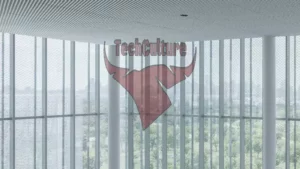In the fast-paced world of white-collar work, the eternal struggle of balancing productivity and time management is a daily conundrum. Meetings, a necessary evil for many, often take up a significant chunk of the workday, leaving employees wondering if there’s a more efficient way to navigate the endless sea of conference rooms and agendas. Enter Sam Liang, the CEO of Otter, who pondered a groundbreaking idea that could revolutionize the way professionals approach their daily rendezvous.
With up to 10 meetings on his plate every day, Liang found himself questioning the necessity of physical presence in these gatherings. What if artificial intelligence avatars could step in on behalf of employees, perfectly replicating their actions and speech patterns? According to the visionary CEO, the prospect of AI avatars taking over meeting duties may not be as far-fetched as one might think. In fact, Liang believes that a prototype could come to fruition as soon as later this year, a testament to the rapid advancements in AI technology.
To achieve the level of authenticity required for these AI avatars to seamlessly blend in with human counterparts, Liang suggests that they should be meticulously trained on the unique voice data and meeting notes of the individuals they’re emulating. This level of personalization would enable the avatars to not only mimic their human counterparts but also respond to queries with an impressive 90% accuracy rate. The potential time-saving benefits of having AI avatars handle routine meetings related to customer support, sales, and team updates are immense, freeing up employees to focus on more strategic and creative tasks.
While the concept of AI avatars infiltrating the corporate meeting scene is undoubtedly intriguing, it’s essential to acknowledge the hurdles that stand in the way of this futuristic vision. Technical challenges aside, the social implications of integrating AI into the workplace raise ethical questions and potential resistance from employees accustomed to traditional meeting dynamics. However, Otter’s recent introduction of a feature allowing multiple users to interact with an AI chatbot signals a significant step towards realizing the full potential of AI avatars.
In a world where time is money and efficiency is paramount, the allure of AI avatars as meeting proxies is undeniable. While face-to-face interactions will always hold value in business dealings, the prospect of delegating mundane meeting tasks to AI entities opens up exciting possibilities for streamlining workflows and boosting overall productivity. As we navigate the evolving landscape of AI integration in the workplace, one thing is certain: the future of meetings may never be the same.



